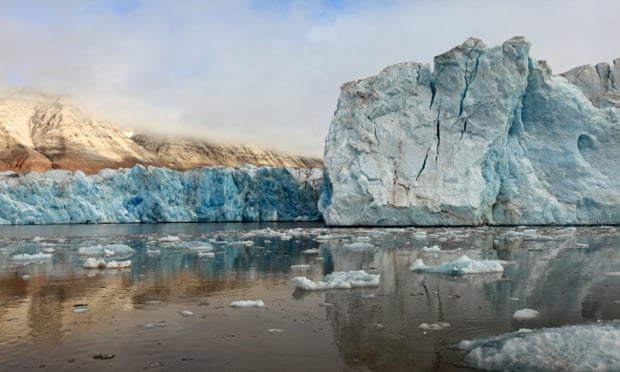by John Vidal, The Guardian, June 1, 2015

The string of massive snowstorms and bone-chilling cold on the US east coast, as well as flooding in Britain and record temperatures in Europe, are linked to rapid ice loss in the Arctic, new research appears to confirm.
While the rapidly-thawing Arctic cannot be held responsible for specific weather events like the “snowmageddon” in 2009, Hurricane Sandy, or European heatwaves, researchers at Rutgers university said it appears to be a prime reason why the polar jet stream – a ribbon of winds that encircles the globe – gets ‘stuck’ with increasing frequency.
Western Europe and large parts of North America will experience more extreme weather because of “Arctic amplification” - the enhanced sensitivity of high latitudes to global warming, the team suggested in a paper published in the journal Philosophical Transactions of the Royal Society A.
“We are seeing these extremes because the Arctic is warming faster than elsewhere. The whole lower atmosphere is heating up but the sea ice is the most observable. This is having this effect on the jet stream, making it extend further south and stay longer,” said co-author Jennifer Francis.
“The jet stream creates weather of all sorts and where you are in relation to it dictates wether it is hot or cold. When we have a ridge, or a big bulge, in the the jet stream, it makes it extend further and stay longer. When that ridge is stronger it tends to be more persistent,” she said.
Deep troughs in the jet stream have been seen regularly in the past few years affecting the east coast of the US, western Europe and central Asia. These have brought prolonged, unusually hot weather to some places, and extended cold or record snowfall to others.
“We are seeing extended periods of extreme weather because when the temperature difference between polar and mid northern latitudes gets smaller [because of global warming] this has the effect of weakening the jet stream , allowing it to be deflects more easily and to meander more. It’s a combination of natural conditions being intensified and global warming,” said Professor Francis.
The authors expect that eventually it will be possible to predict accurately which types of extreme events will be more likely to occur in certain areas but because Arctic amplification has emerged only in the past 20 years it is a challenge to pin down exactly how it affects weather patterns.
But the impacts could be substantial, they warn. “This new manifestation of of global warming ... may have substantial societal impact as more frequent extreme weather events in mid latitudes will affect billions of people directly through damage to property and infrastructure and indirectly through farming and water supplies,” the authors wrote.
The study builds on other research which shows how the changing Arctic may be affecting weather in mid-latitudes. According to some, a slower jet stream takes a more meandering path as it encircles the northern hemisphere. Other studies have linked ice loss in the Barents and Kara seas to the north of Russia with extremely cold winters in central Asia.
According to the US Snow and Ice data centre, Arctic sea ice extent last month averaged 5.4 million square miles), the second lowest April ice extent in the satellite record. It is 313,000 sq m) below the 1981 to 2010 long-term average of 6 million sq m) and 31,000 sq m) above the previous record low for the month observed in 2007.
No comments:
Post a Comment